We love gardening, and seeing our vegetables and flowers healthy makes us happy. But aren’t we forgetting something? Yeah! Sprinklers aren’t the best.
Usually, we all use sprinklers for our garden, but it wastes so much water. Some plants even don’t get enough water to reach their roots because sprinkler water evaporates quickly. So, we get a soaker hose installed!
Soaker hoses save water, money, and our environment! They are the perfect addition to any garden. But you need to know how long to run a soaker hose to get its benefits. Trust us; we learned the hard way.
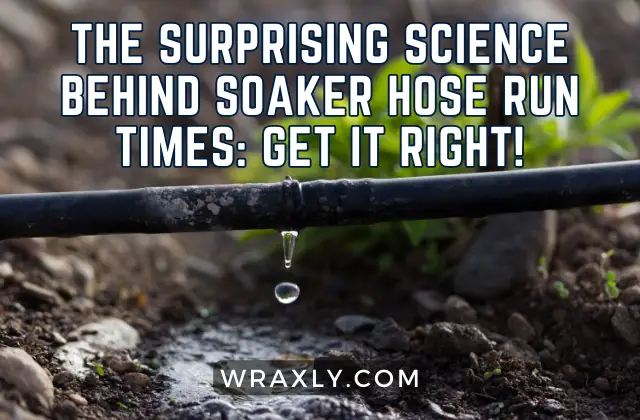
- Factors Influencing How Long to Run a Soaker Hose
- Determining the Ideal Amount of Time to Run a Soaker Hose
- Adjusting Runtime for Different Areas
- Automating Soaker Hose Runtime
- Assessing Moisture Levels and Water Needs
- Signs of Proper Watering and Adjustments
- Efficient Usage of Soaker Hoses
- Resources for Determining Ideal Runtime
- FAQ
- Final Thoughts on How Long to Run a Soaker Hose
Factors Influencing How Long to Run a Soaker Hose
When we first got our soaker hose, we were just winging it until we finally knew what factors should matter in the case of its runtime. We want to share the factors, so you don’t make the same mistakes we did.
- Soil Type and Moisture Retention
Did you know your garden’s soil type is a big factor that affects how long you should run a soaker hose? We didn’t, and many of our beau plants died because of it.
Don’t make the same mistake, my friend! Various soils need different soaking times in order to let water seep in to wet the soil properly. If you have dry sandy soil in your garden, you will need lots of water to hydrate your plants properly.
However, clay soil retains moisture longer and more easily, and the soak time is less. One thing we learned is that mulch can help any type of soil hold moisture for a longer period. So, if you have mulch, your soak time will be less!
- Plant Water Requirements
Do you know what we like about soaker hoses? It’s very slow and doesn’t just spray your plants with water. It gently waters the soil near your plants, so there’s less evaporation and more water for your plants to take up.
However, if you have large trees and shrubs, you need to have good water pressure and run the hose longer. Otherwise, your trees will be thirsty as the trickling of water is too slow for them.
- Conditions météorologiques
The weather can save you soaker hose runtime or do the opposite. As you can guess, dry, sunny, windy, and hot weather will make your soaker hose work overtime to cover water losses.
On the other hand, the amazing rain will give your soaker hose a break from all the work and also save you some extra money.
But, obviously, in the summer, you need to run your soaker hose extra to let your plants enjoy the hydration and completely soak the soil. So, always be mindful of the weather. Don’t turn your hose on when it’s raining because it’s meaningless.
- Design and Permeability of Soaker Hose
When we first ordered our soaker hose, it took us a minute to figure out which one to get. There are just so many models, options, and features! The process is overwhelming.
If you have lots of plants and trees, you need the soaker hose design to be able to water everything. If the holes are too small, then your plants won’t receive the amount of water they need.
De plus, your soaker hose can get clogged due to hard water. Hard water is mainly water with heavy amounts of dissolved minerals like calcium. So, check the hose and make sure the water pressure is optimal.
Systèmes d’irrigation goutte à goutte recommandés
| Image | Titre | Prime | Acheter |
|---|---|---|---|
 | Kit d'irrigation goutte à goutte, 165 pieds, 190 pièces, système d'irrigation de jardin, tube de distribution vierge de 1/4" et 1/2", kit d'arrosage goutte à goutte, équipement d'irrigation automatique pour serre de jardin, parterre de fleurs, patio, pelouse | PrimeAdmissible | Vérifiez mon prix sur Amazon |
Haut | MIXC Kit d'irrigation micro goutte à goutte pour serre de 226 pieds, système d'irrigation automatique, système d'arrosage pour plantes de brumisation de patio avec tuyau de distribution vierge de 1/4 pouces et 1/2 pouces, buse réglable, émetteurs, raccords barbelés | PrimeAdmissible | Vérifiez mon prix sur Amazon |
 | Kit d'irrigation goutte à goutte, système d'arrosage de jardin de 43 m/141 pieds avec adaptateur rapide, tuyau de distribution 1/4, buse réglable, arroseur d'eau sans fuite, système d'irrigation automatique, brumisation pour serre | PrimeAdmissible | Vérifiez mon prix sur Amazon |
 | Kit de système d'irrigation goutte à goutte de 240 pieds, système de brumisation d'arrosage automatique de jardin Yomile avec tuyau de 1/2 pouce, tube de distribution de 1/4 pouce, émetteurs de goutte à goutte, buse 2 en 1 pour serre, cour, pelouse | PrimeAdmissible | Vérifiez mon prix sur Amazon |
 | Kit d'irrigation goutte à goutte de 201 pièces de 164 pieds – Système d'arrosage Cokacot avec tube épais, émetteurs goutteurs réglables, connecteur de tube en T et tiges fixes pour jardin, cour, pelouse, patio, plantes, parterres de fleurs | PrimeAdmissible | Vérifiez mon prix sur Amazon |
 | CARPATHEN Système d'irrigation goutte à goutte – Système d'arrosage de jardin réglable de qualité supérieure pour parterre de jardin surélevé, cour, pelouse, serre – Kit complet d'irrigation goutte à goutte avec émetteurs goutte à goutte, tube 1/4 et connecteurs | PrimeAdmissible | Vérifiez mon prix sur Amazon |
 | HIRALIY Kit d'irrigation goutte à goutte de 98,4 pieds, système d'arrosage de jardin, tube de distribution vierge de 6 x 4 mm, ensemble d'équipement d'irrigation automatique pour plantes d'extérieur, kit d'irrigation micro goutte à goutte pour fleurs de serre, terrasse, pelouse | PrimeAdmissible | Vérifiez mon prix sur Amazon |
Determining the Ideal Amount of Time to Run a Soaker Hose
Now that you know the different factors, you can set up an ideal runtime for your soaker hose. If you’re still confused, don’t worry! Isn’t that why we are here?
- Adjusting for Soil Moisture Levels
When we first got our soaker hose, we observed for a few days and measured the moisture in our soil to see how long it took. You can do the same!
Just put your finger in the soil and feel if the bottom soil is wet or dry. Keep on doing it until the soil feels completely wet. Make sure to time it and set up a running time.
However, you can also use a soil moisture meter to measure it automatically. It will give you accurate results, and you can decide the runtime easily.
Just remember, trees need a wider and deeper moist soil level than small plants, which only need about 6 to 8 inches deep.
Humidimètres de sol recommandés
| Image | Titre | Prime | Acheter |
|---|---|---|---|
 Haut
Haut | Lot de 2 humidimètres du sol, pas de batterie nécessaire (noir et vert) | PrimeAdmissible | Vérifier le prix sur Amazon |
Haut Haut
Haut | pH-mètre de sol 3 en 1 testeur de sol humidité, lumière, pH, outil de mesure pour jardin | PrimeAdmissible | Vérifier le prix sur Amazon |
 Haut
Haut | Humidimètre de sol Luxekem. Kit d'analyse de sol 4 en 1 pour plantes d'intérieur, avec 20 étiquettes | PrimeAdmissible | Vérifier le prix sur Amazon |
 Haut
Haut | HOTWAV Humidimètre de sol, kit de test de sol 3 en 1 avec humidité/lumière/pH mètre (2 paquets) | PrimeAdmissible | Vérifier le prix sur Amazon |
 Haut
Haut | Soil Moisture Meter-2 Packs Soil Test Kit for Garden-No Battery Needed | PrimeAdmissible | Vérifier le prix sur Amazon |
 Haut
Haut | PH-mètre de sol 5 en 1, avec fonctions de test de l'humidité du sol et de l'environnement, de la température, de la lumière et du pH | PrimeAdmissible | Vérifier le prix sur Amazon |
 Haut
Haut | Humidimètre de sol XLUX, pas de piles requises, lot de 2 | PrimeAdmissible | Vérifier le prix sur Amazon |
- Considering Plant Types and Growth Stages
Not every plant requires the same amount of water, so what can you do? If you have multiple types of plants, you can always get a feeder splitter and attach several soaker hoses to it.
Moreover, like us, plants have different growth stages. So, you need to water small plants with less water and bigger plants with a lot of water. On the other hand, if you are using a soaker hose for a vegetable or jardin de fleurs, just turn on your soaker hose for half an hour, 2 to 3 times weekly. See: Determining How Long to Run Drip Irrigation Systems for Vegetables
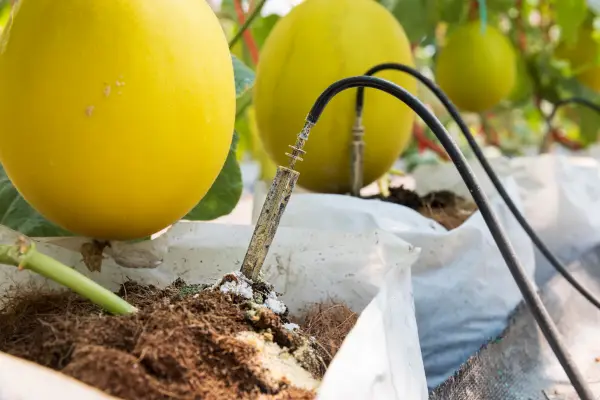
- Adapting to Weather Conditions
You always have to go with the flow in the case of weather. If it’s sunny, run your soaker hose a little longer than you usually do, but during cold weather, you can water less.
Moreover, the soaker hose’s runtime has no definite time. It all depends on your needs, weather, and plants.
Adjusting Runtime for Different Areas
Aside from the weather, your soaker hose runtime should be based on where you’ve planted your plants and how the plant is.
- Variations in Sun Exposure and Soil Conditions
If you have plants in a shaded area, we can tell you that your runtime will be shorter. Because a shaded area lets your soil hold onto moisture for a longer period.
However, if your plants are directly under the sun, be sure they will be parched! They will need a constant water supply until the soil is entirely saturated, so you have to run the soaker hose longer.
For example, if you initially run it for an hour, on sunny days or under heavy sun exposure, you need to keep it on for at least 2 hours.
- Watering Newly Planted Areas
New plants are such cuties with their adorable green leaves and small stems. As new plants are usually small and don’t have long roots yet, they need a small amount of water to survive.
Moreover, if you planted some new plants, make sure to give them plenty of water, but don’t overwater!
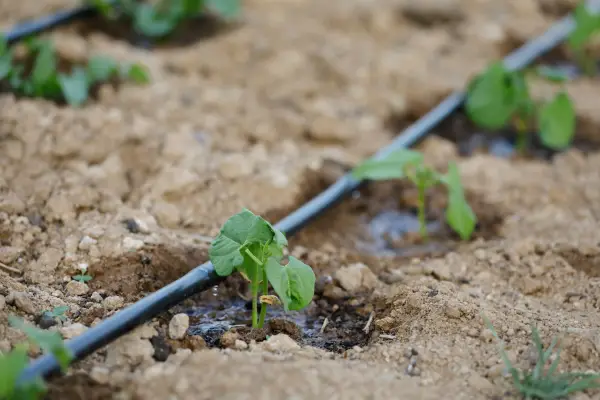
- Balancing Water Distribution
To keep your plants in tip-top shape, you need to regularly water them and also maintain the balance of water distribution. We know how much it’s difficult to keep a balance in distribution. It took us a while, but eventually, we learned the perfect way.
You need to check your hose pipe once in a while and remove any clogs or dirt from the holes. Position the hose in a way that it’s close to the plant and on the soil.
Moreover, always check your water pressure and the moisture level of different parts of your garden.
Automating Soaker Hose Runtime
Automatic soaker hoses are truly a lifesaver! We get to spend so much doing other things now at our home and don’t have to keep track of the watering system. Even if we forget, the soaker hose automatically stops. Neat, right?
You can also get it done easily!
- Irrigation Controllers and Timers
Have you heard of irrigation timers and controllers? If you haven’t, then you’re in for a treat.
Irrigation controllers and timers help you plan your watering schedule in advance. You can easily and effortlessly set up the controller based on your garden’s soil type, weather, and even plant water requirements.
It also lets you set up a specific time for the soaker hose to go off and turn off. Now, you have no worries about wasting water or money!
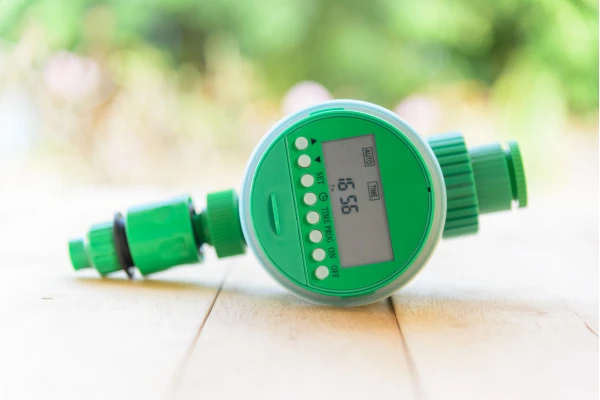
- Benefits and Considerations
If you’re wondering if an automatic soaker hose is worth it, just trust us. We replaced our sprinkler system and used a soaker hose irrigation system, and we never looked back.
Benefits:
- The soaker hose waters at the plant’s base instead of the leaves. It keeps the leaves dry, and we end up having lesser slug issues or rotting.
- You don’t have to worry about uneven watering anymore. Every one of your plants will receive a balanced amount of water, and the water pressure won’t destroy any part of the plant.
- The divisions of soil in-between plants are less muddy, helping keep parasites and bugs away.
- You can set up your own watering schedule and can even set it up before a vacation.
- You will notice a huge difference in your water bill as an automatic soaker hose wastes less water.
Things to Consider:
- Your soaker hose pipe is porous, and eventually, it can split open due to sun damage and cause leaks. Even heavy water pressure can tear the hose and shoot water in every direction.
- It’s hard to put soaker hoses in garden pots. You will need an intermediate garden hose to be able to do this.
- Your timer won’t go off unless you’ve programmed it, and it can lead to water wastage.
Recommended Irrigation Timers
| Image | Titre | Prime | Acheter |
|---|---|---|---|
 | RAINPOINT Sprinkler Timer,Water Timer Programmable Garden Outdoor Hose Feature Timer with Rain Delay/Manual/Automatic Watering System,Waterproof Digital Irrigation Timer System for Lawns Pool,1 Outlet | PrimeAdmissible | Vérifiez mon prix sur Amazon |
Haut | Orbit 58910 Programmable Hose Faucet Timer, 2 Outlet, Green | PrimeAdmissible | Vérifiez mon prix sur Amazon |
 | Moistenland Sprinkler Timer, Water Timer for Garden Hose, Water Hose Timer Outdoor, with Rain Delay/Manual/Automatic Watering System, IP54 Waterproof, 2.6 Inches Large Screen(1 Outlet) | PrimeAdmissible | Vérifiez mon prix sur Amazon |
 | Sprinkler Timer, Outdoor Garden Hose Faucet Timers, Programmable Water Timer with Rain Delay/Manual/Automatic Irrigation System, Drip Irrigation and Lawn Watering System for Yard, Lawns, 1 Outlet… | PrimeAdmissible | Vérifiez mon prix sur Amazon |
 | Orbit 57894 Easy Set Logic 4-Station Indoor/Outdoor Sprinkler Timer/Controller Green Grey | PrimeAdmissible | Vérifiez mon prix sur Amazon |
 | Sprinkler Timer 2 Zone, Diivoo Programmable Water Hose Timer 2 Outlet for Garden, Automatic Irrigation Timer IP54 with Rain Delay/Manual/Auto Mode, Outdoor Hose Timer Controller for Lawn, Yard, Pool | PrimeAdmissible | Vérifiez mon prix sur Amazon |
 | DEWENWILS Sprinkler Timer 4 Zone, Water Timer for Garden Hose with Rain Delay/Manual/AUTO Irrigation Timer, Programmable Outdoor Faucet Hose Timer for Yard, Lawn | PrimeAdmissible | Vérifiez mon prix sur Amazon |
Assessing Moisture Levels and Water Needs
Too much and not enough moisture are both harmful to your plants. They need a balanced amount of water regularly, but how do we measure it? Good question because it’s really hard to measure by just looking at the soil.
So, let’s get to assessing moisture levels and water needs.
- Monitoring Soil Moisture
You can use a soil moisture sensor or meter and check the results. They are accurate and will give you the best estimation.
- Understanding Plant Water Requirements
You need to understand which plants require more water than others. For example, a cactus plant doesn’t need to be watered every day, whereas a flowering plant or vegetable-bearing plants need water daily to grow.
- Using Rain Gauges or Water Meters
Many people get rain gauges or water meters for their backyards. We went to a friend’s house, and we asked them about it because they also had one.
We learned that a rain gauge or water meter mainly tells you about the precipitation your location receives or the amount of water usage and helps you adjust your soaker hose runtime accordingly.
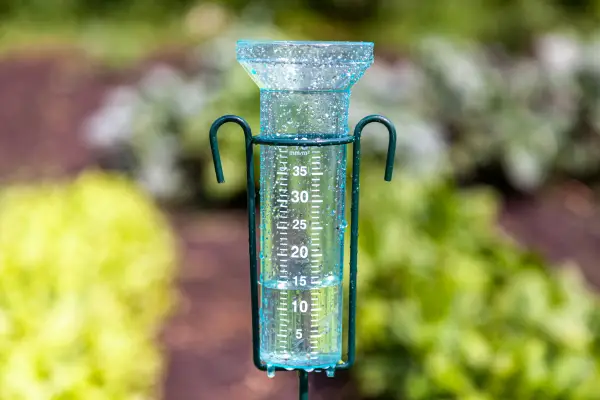
Signs of Proper Watering and Adjustments
When you water your plants or garden properly, you can clearly see the signs and the improvement. But you can also notice damages when there’s something wrong.
- Monitoring Plant Health and Soil Moisture
When you monitor your plant’s health and soil moisture, you can detect any problems early on. You can use different moisture-measuring tools to monitor and store the data.
- Signes de sous-arrosage et de surarrosage
When you’re overwatering your plants, you’ll notice the root starting to rot, brown lumps forming on the leaves, slow plant growth, and buildup of water pressure, which can form lesions on the leaves.
On the other hand, if you notice brown, paper-like, dry leaves, dried-out roots and branches, curled and wrinkly leaves, and hard, dry soil, you’re definitely underwatering your plants. These signs are just showing that they are dying without water.
- Making Runtime Adjustments
Now that you have measured and observed, you need to make some adjustments to your soaker hose. Adjust the water pressure and the runtime.
If you’re overwatering, decrease the time by half an hour, and underwatering, increase by half an hour. However, you must check the results to know if it’s working or if you need to adjust again.
Efficient Usage of Soaker Hoses
Is your soaker hose not giving you the results you looked forward to? Well, you might have placed it improperly or haven’t maintained it. Here are some things to consider.
- Proper Placement of Soaker Hose
Your soaker hose needs to be placed near your plant’s base, but don’t let it touch the stem. You should also avoid overcrowding or overlapping the pipes; it doesn’t work properly, nor does it look good.
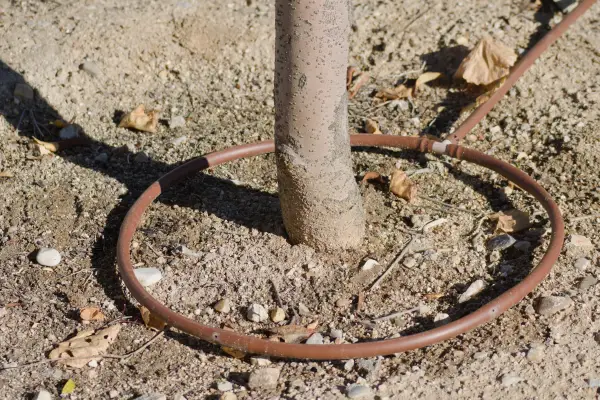
- Mulching for Water Conservation
Mulching will save water and your plants! When you cover the base of your plants with mulch, it helps retain moisture for longer and quicker. Moreover, mulch protects your plants from heavy rain, soil erosion, dry soil, mud, and pests.
- Regular Maintenance and Inspection
Your job isn’t done yet! You still need to inspect your garden at least once a week and maintain it. On your weekends, grab a shovel and loosen a bit of soil to give it oxygen exposure, take out the weeds, and spray for pests.
You should also clean your soaker hose once a week for better watering results and to avoid clogging or bursting.
Resources for Determining Ideal Runtime
It’s really easy to get confused when you’re using a soaker hose for the first time. It happened to us also, so don’t be shy and use the resources you have at hand.
- Reach out to your local extension service provider; they know what to do. They will help you identify your soil type, let you know how much water each plant needs, and guide you through the whole soaker hose process.
- You will find many gardening books about drip irrigation, and there’s always the internet if you can’t find any books. We also learned many valuable information on soaker hose runtime from people all around the world, so don’t lose hope. Start by using their given watering hours and adjust slowly.
- Local gardening communities are the sweetest and most helpful places you can reach out to. You can ask questions, get advice, share experiences, and learn different techniques from the community.
Recommended Drip Irrigation Books
| Image | Titre | Prime | Acheter |
|---|---|---|---|
 | Drip Irrigation in the Home Landscape | PrimeAdmissible | Vérifiez mon prix sur Amazon |
Haut | Drip Irrigation for Every Landscape and All Climates, 2nd Edition | PrimeAdmissible | Vérifiez mon prix sur Amazon |
 | Drip Planning Guide | Prime | Vérifiez mon prix sur Amazon |
 | Sprinklers & Drip Systems: The Right System for Your Yard, Step-by-step Sprinkler Installation, Building Effective Drip Systems | Prime | Vérifiez mon prix sur Amazon |
 | WATER SAVING DRIP IRRIGATION SYSTEM HANDBOOK: Discover the Modern Techniques on Planning, Designing, Operation, and Maintenance of Good Drip System for Your Garden Plants | PrimeAdmissible | Vérifiez mon prix sur Amazon |
 | Installing Drip Irrigation (Grow-It Maps) | Prime | Vérifiez mon prix sur Amazon |
FAQ
You can overwater your plants with a soaker hose if you let the water run for hours without supervision.
Well, we think it’s best to water deeply and less frequently. In this way, your plants have more water for a long time, and you get to save on your water bill.
Yes, why not! You just need a feeder splitter to connect the soaker hoses to your main garden hose that’s connected to the faucet.
Wilted, brown, dry leaves and branches can show that you’re not giving enough water. On the other hand, brown lesions, plumping of leaves, root rot, etc., shows your plants don’t need any more water.
You can easily automate your soaker hose’s runtime by setting up the soil type, plant water requirements, and time. It will then automatically run for a certain time and stop!
Final Thoughts on How Long to Run a Soaker Hose
A soaker hose is a great tool and irrigation system for your plants. They provide balanced water and save you a lot of cash along the way. Not only that, they are great for the environment also.
But remember to adjust the runtime to your requirements. Some gardens might need only an hour of runtime, while others may need three; it all depends on different factors.

Darrell a une passion pour le jardinage qu'il a héritée de son père. Aller ici pour en savoir plus sur l'influence que son père a joué dans son amour pour le jardinage. Si vous souhaitez envoyer un message rapide à Darrell, rendez-vous sur sa page de contact ici.

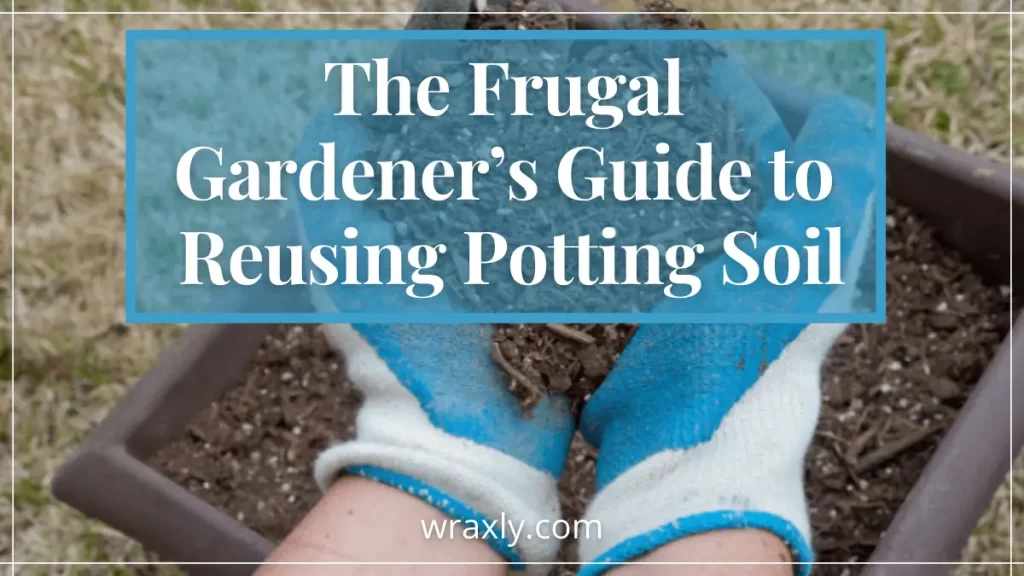
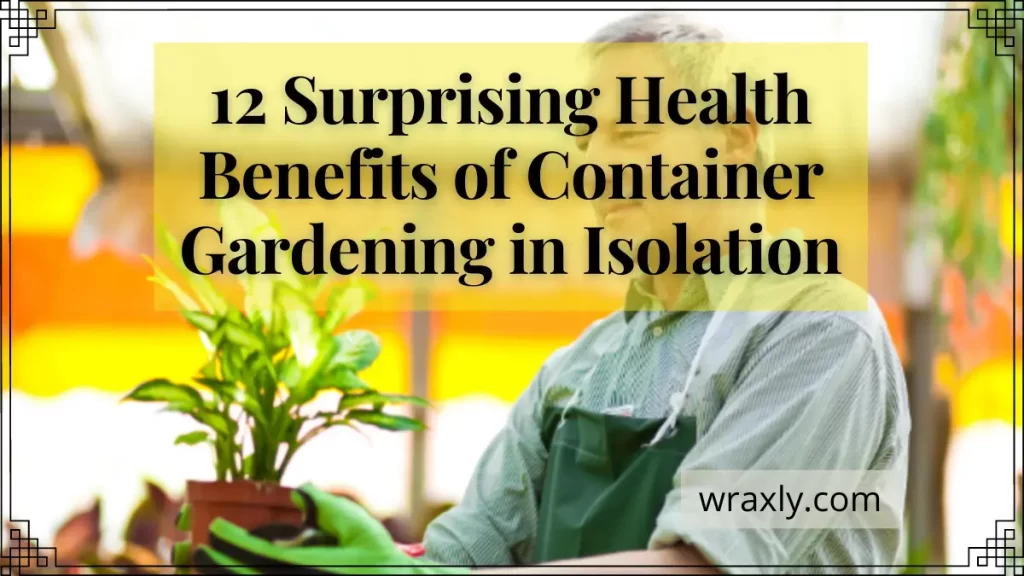
![10 erreurs courantes de jardin en conteneur à éviter [Guide du débutant]](https://wraxly.com/wp-content/uploads/2021/02/10-Common-Container-Garden-Mistakes-to-Avoid-Beginners-Guide-1200-1024x576.webp)